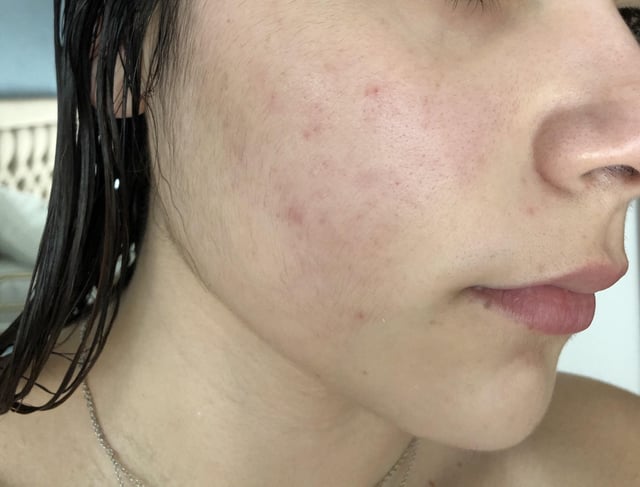Introduction to Milia
Milia are tiny, white bumps that appear on the skin, often mistaken for whiteheads or pimples. These small cysts form when keratin, a protein found in the skin, becomes trapped beneath the surface. While milia are harmless, they can be a cosmetic concern for many people, especially when they appear on the face. Fortunately, several effective milia treatments can help you achieve a clear complexion.
Understanding Milia
Before diving into the treatments, it's important to understand what milia treatment in Dubai are and why they form. Milia typically appear around the eyes, cheeks, and nose, and they are most common in newborns but can affect people of all ages. Unlike acne, milia are not caused by bacteria or clogged pores but are instead due to the skin’s inability to shed dead cells properly. This leads to the formation of tiny cysts that are difficult to remove without proper treatment.
Top Milia Treatments for a Clear Complexion
If you're looking to get rid of these stubborn bumps, here are the top milia treatments that can help you achieve a clear complexion:
1. Topical Retinoids
Topical retinoids are derivatives of vitamin A and are widely used in skincare for their ability to promote cell turnover. By speeding up the skin's natural exfoliation process, retinoids help to prevent the buildup of dead skin cells, which can reduce the occurrence of milia. Regular use of topical retinoids can help in softening the skin, making it easier for milia to clear on their own. However, it's essential to use retinoids under the guidance of a dermatologist, as they can cause irritation, especially for sensitive skin.
2. Chemical Peels
Chemical peels are another effective treatment for milia. They involve the application of a chemical solution to the skin, which causes the top layer to peel off, revealing smoother, clearer skin underneath. Chemical peels help to unclog pores, remove dead skin cells, and reduce the appearance of milia. Glycolic acid and salicylic acid peels are particularly effective for treating milia, as they penetrate deeply into the skin to promote exfoliation. This treatment should be performed by a skincare professional to avoid any potential skin damage.
3. Extraction by a Professional
One of the most direct ways to remove milia is through manual extraction by a trained professional. Dermatologists and estheticians use a sterile needle or a small blade to make a tiny incision in the skin, followed by the gentle extraction of the milia using a comedone extractor. This method provides immediate results and is particularly effective for larger or more stubborn milia. However, it's crucial to have this procedure done by a professional to minimize the risk of scarring or infection.
4. Laser Treatment
Laser treatment is a more advanced option for treating milia, particularly for those that are deep or resistant to other treatments. Laser therapy works by using focused light energy to target and break down the trapped keratin under the skin. This non-invasive procedure is precise and can effectively treat milia without damaging the surrounding skin. Laser treatment is usually recommended for persistent milia that do not respond to other methods.
5. Microdermabrasion
Microdermabrasion is a popular exfoliating treatment that uses tiny crystals or a diamond-tipped wand to remove the outer layer of dead skin cells. This process helps to unclog pores, smooth the skin's surface, and reduce the occurrence of milia. Microdermabrasion is a gentle procedure that can be done in a dermatologist's office or at a spa, and it is suitable for all skin types. Regular sessions can help keep the skin clear and free from milia.
6. Cryotherapy
Cryotherapy is a treatment that involves freezing the milia using liquid nitrogen. This method works by causing the milia to blister and eventually fall off as the skin heals. Cryotherapy is particularly effective for larger milia and is often used in conjunction with other treatments. While it may cause temporary redness or irritation, it is a quick and effective way to remove milia.
7. Over-the-Counter Exfoliants
For mild cases of milia, over-the-counter exfoliants can be an effective at-home treatment. Products containing alpha hydroxy acids (AHAs) or beta hydroxy acids (BHAs) help to gently exfoliate the skin, preventing the buildup of dead skin cells that can lead to milia. Regular use of these exfoliants can help to maintain clear skin and reduce the occurrence of milia over time. It's important to choose a product suitable for your skin type and to follow the instructions carefully to avoid irritation.
Preventing Milia Recurrence
While milia can be effectively treated, preventing their recurrence is key to maintaining a clear complexion. Here are some tips to keep your skin free from milia:
- Regular Exfoliation: Incorporate gentle exfoliation into your skincare routine to prevent the buildup of dead skin cells.
- Avoid Heavy Creams: Use non-comedogenic products that won't clog your pores or trap keratin beneath the skin.
- Sun Protection: Protect your skin from the sun by using a broad-spectrum sunscreen daily, as sun damage can exacerbate milia.
- Gentle Skincare: Avoid harsh skincare products that can irritate the skin and contribute to milia formation.
Conclusion
Milia may be small, but they can be a significant cosmetic concern for those who want clear, smooth skin. Fortunately, there are several effective milia treatments available that can help you achieve a clear complexion. Whether you choose topical retinoids, chemical peels, or professional extraction, the key is to find a treatment that works for your skin type and concerns. With the right approach, you can say goodbye to milia and hello to a radiant, bump-free complexion.





Comments